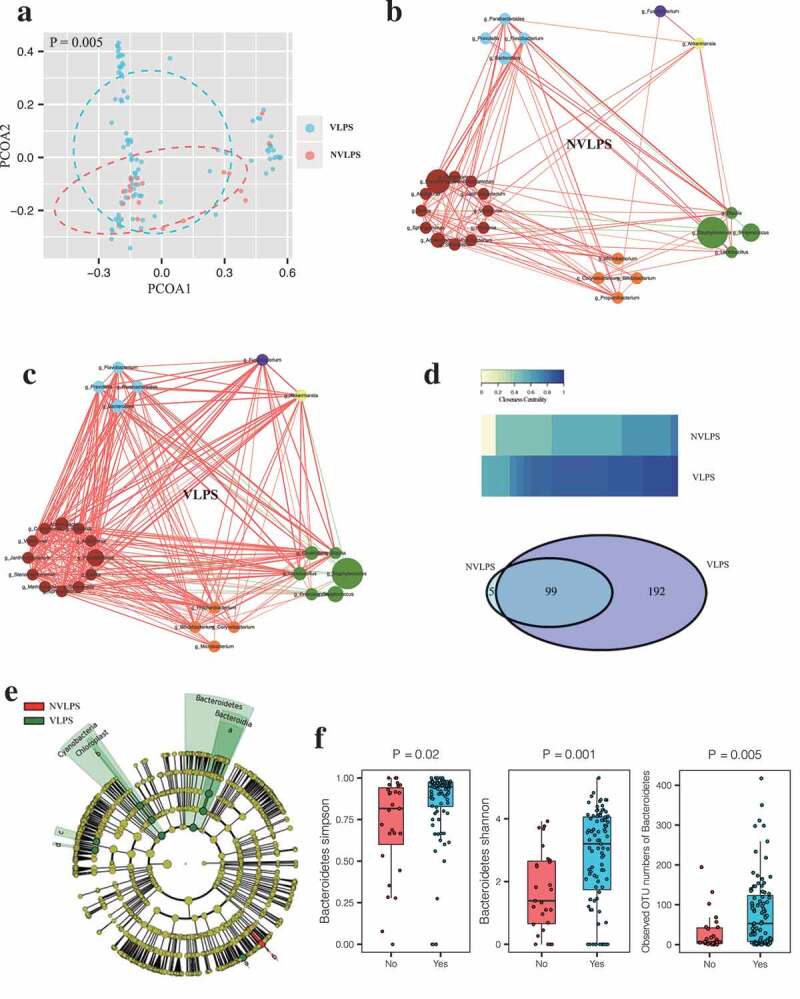Figure 2.

Associations between vaginal luteal support and gut Bacteroidetes abundance in the neonates conceived by ART.
(a) Comparison of β diversity between vaginal (VLPS) versus nonvaginal (NVLPS) luteal support drug groups using PERMANOVA based on Bray-Curtis distances. (b) Cooccurrence network analysis in NVLPS group. Each node represents a genus, nodes of the same color belong to the same phylum, the significantly correlated genera (FDR < 0.05) were visualized. The node size represents the relative abundance of the genus, the red line represents the positive correlation of the genus, the green line represents the negative correlation of the genus, and the line thickness represents the correlation strength. (c) Cooccurrence network analysis in VLPS group. (d) Comparison of gut microbiota ecology between VLPS versus NVLPS groups. Heatmap plot of centrality of nodes (genera), and Venn Diagram shows the number of connections in the two microbial networks. (e) Linear discriminant analysis of taxa enrichment between VLPS versus NVLPS groups. Criteria: Alpha value for the factorial Kruskal-Wallis test among classes < 0.05; Alpha value for the pairwise Wilcoxon test between subclasses <0.05; LDA score for discriminative features > 4. (f) Comparison of α-diversity of Bacteroidetes (Simpson, Shannon index and Observed OTU numbers of Bacteroidetes) between VLPS versus NVLPS groups using the one-way ANOVA. Boxes indicate interquartile range, lines indicate medians, and whiskers represent range.
